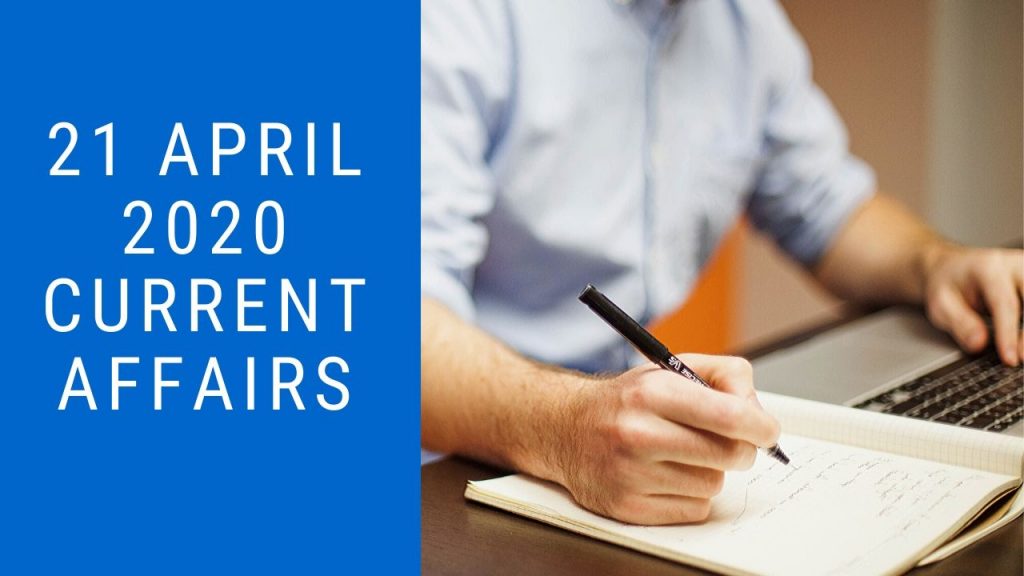Table of Contents
Matterhorn:
The Matterhorn is a mountain of the Alps, straddling the main watershed and border between Switzerland and Italy. Its summit is 4,478 metres (14,692 ft) high, making it one of the highest summits in the Alps and Europe. The Matterhorn is mainly composed of gneisses from the Dent Blanche nappe, lying over ophiolites and sedimentary rocks of the Penninic nappes. Indian Tricolour of more than 1,000 meters in size was projected on Matterhorn Mountain, Zermatt, Switzerland to express solidarity to all Indians in the fight against COVID-19.
World Wide Help (WWH):
IIT Bombay has developed a platform named World Wide Help (WWH) which can be used to connect people seeking medical help with helpers, such as doctors.
- The WWH platform can be used with an app or a phone. The user simply calls a dedicated number and can input basic data such as the age of the person in need of help and whom they wish to solicit help from. They can supply the phone number, too.
- This is registered as a task in the app and assigned to a primary helper who is a junior doctor or medicare professional. Further, the task may be re-designated by the primary helper to a senior doctor, who is the second level of helper.
Monetary Policy Committee (MPC):
The RBI has a government-constituted Monetary Policy Committee (MPC) which is tasked with framing monetary policy using tools like the repo rate, reverse repo rate, bank rate, cash reserve ratio (CRR).
It has been instituted by the Central Government of India under Section 45ZB of the RBI Act that was amended in 1934
The MPC is entrusted with the responsibility of deciding the different policy rates including MSF, Repo Rate, Reverse Repo Rate, and Liquidity Adjustment Facility.
Composition of MPC:
- The committee will have six members. Of the six members, the government will nominate three. No government official will be nominated to the MPC.
- The other three members would be from the RBI with the governor being the ex-officio chairperson. Deputy governor of RBI in charge of the monetary policy will be a member, as also an executive director of the central bank.
PM-KISAN Scheme:
It is implemented as a central sector scheme by the Government of India. This scheme was introduced to augment the source of income of many small and marginal farmers. With a view to augment the income of the Small and Marginal Farmers (SMFs), the Government has launched a new Central Sector Scheme, namely, “Pradhan Mantri Kisan Samman Nidhi (PM-KISAN)” in the current financial year.
- The PM-KISAN scheme aims to supplement the financial needs of the SMFs in
procuring various inputs to ensure proper crop health and appropriate yields,
commensurate with the anticipated farm income at the end of each crop cycle. - This would also protect them from falling in the clutches of moneylenders for meeting
such expenses and ensure their continuance in the farming activities. - Under the Scheme, direct payment of Rs. 6000 per year will be transferred in three
equal installments of Rs. 2000 each every four months into the Aadhar ceded bank
accounts of eligible landholding SMFs families.
Kasaragod model:
Kasaragod is a municipal town and the district headquarters of the Kasaragod district of Kerala state in India. Kasaragod reported the third case of COVID-19 in the country — a student airlifted from Wuhan on February 3. The district administration mounted a massive exercise to trace the 150-odd contacts of that one student.
- t involves aggressive testing, technology, foolproof contact tracing, and an effective public awareness campaign.
- A special officer was appointed to coordinate the functioning of the district administration and for effective coordination between line departments at field and secretariat levels.
- Section 144 was imposed in the entire district, with seven drones employed for surveillance.
- Under the Care for Kasaragod initiative, a detailed action plan — a common coordinated action plan — was drawn up for combating COVID-19 so that all stakeholders could turn to it when the situation arose.
New Development Bank:
It is a multilateral development bank operated by the BRICS states (Brazil, Russia, India, China, and South Africa). The New Development Bank was agreed to by BRICS leaders at the 5th BRICS summit held in Durban, South Africa in 2013. It was established in 2014, at the 6th BRICS Summit at Fortaleza, Brazil. The bank is set up to foster greater financial and development cooperation among the five emerging markets. The bank will be headquartered in Shanghai, China.
Indian Strategic Petroleum Reserve (ISPRL)
Indian Strategic Petroleum Reserves Limited is an Indian company responsible for maintaining the country’s strategic petroleum reserves. ISPRL is a wholly-owned subsidiary of the Oil Industry Development Board, which functions under the administrative control of the Ministry of Petroleum and Natural Gas.
- ISPRL maintains an emergency fuel store of strategic crude oil enough to provide 10 days of consumption Strategic crude oil storages are at three underground locations in Mangalore, Visakhapatnam and Padur (Udupi, Karnataka).
- All these are located on the east and west coasts of India which are readily accessible to the refineries.

